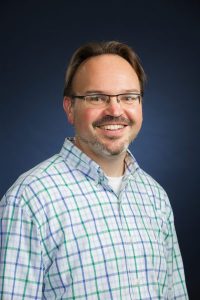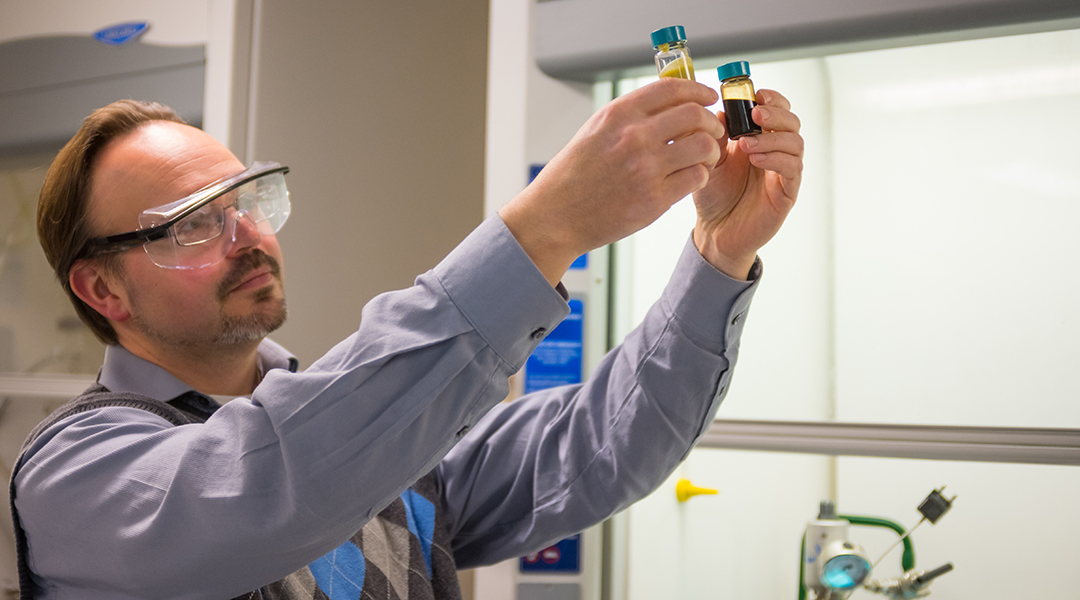 Dr. Prisca M. Henheik, Editor of Advanced Sustainable Systems, talked with Professor Mike Timko, Chemical Engineering at Worcester Polytechnic Institute (WPI), Worcester Massachusetts, about his research and vision of a world without waste.
Dr. Prisca M. Henheik, Editor of Advanced Sustainable Systems, talked with Professor Mike Timko, Chemical Engineering at Worcester Polytechnic Institute (WPI), Worcester Massachusetts, about his research and vision of a world without waste.
Professor Timko holds B.S., M.S., and Ph.D. degrees, all in chemical engineering, and spent nearly 8 years at Aerodyne Research Inc. before joining the faculty at WPI.
His research involves combining components from green chemistry, renewable fuels, and reaction engineering. Of particular interest to him is the fate of heteroatoms, such as sulfur and nitrogen, in refining and combustion processes. Current projects include conversion of food waste into energy and conversion of cellulose to simple sugars under mild conditions.
His research has been recognized by the National Science Foundation CAREER award, a 2019 Fulbright award, and he has received multiple awards from the American Chemical Society and NASA. His education interests include thermodynamics, hands-on and global experiences, entrepreneurship, and energy.
ADSU: On your website it says “My role is to light the fire and open new doors for budding engineers”. It’s easy to get the impression that you’re burning for your science. I’m referring to the video “A World Without Waste”. How did you get the idea to create this video?
Mike Timko: Waste generation and improper disposal have been problems that have troubled me for many years, dating back to childhood, if you can believe it. In my professional life, the potential of waste utilization has become increasingly evident. Why can’t we reduce the waste that flows into our environment and utilize it for the energy, chemical, and materials products that we need in everyday life?
ADSU: Your video “A World without Waste” is about the idea of waste reduction. What is the compelling challenge?
Mike Timko: Much is known about the basic science of waste reutilization, though gaps certainly exist. The challenges then are filling the scientific gaps while developing economically and politically palatable engineering solutions.
ADSU: You also say that waste is not a natural concept. Can you briefly explain?
Mike Timko: Natural ecosystems have no concept of waste. Taking an apple as an example, after larger animals have eaten the parts that they can access, smaller ones, such as insects, are next. Eventually, the digestion process is transferred to microbes. All of these organisms produce waste as part of their metabolism. Yet, these wastes are utilized within the ecosystem, usually by plant or microbial life. Even the carbon dioxide is utilized by plants in their growth. The point is that every organism in the ecosystem is really a “system within systems”. A major problem with waste utilization in human systems is that we have not mastered this concept. Waste generated within one system tends to stay there.
ADSU: So we should look at waste from a new perspective?
Mike Timko: Absolutely. Waste should be viewed as a resource. Waste embodies energy input that has not been fully utilized. Even carbon dioxide generated by combustion represents un-utilized waste, even though carbon dioxide represents the thermodynamic endpoint of carbon utilization. This is because combustion gases concentrate carbon dioxide compared with atmospheric gas, meaning that the work term of separation has not been utilized when carbon dioxide is allowed to disperse in the atmosphere.
ADSU: In your opinion, the focus should be on nitrogen. Why?
Mike Timko: Nitrogen is one important focus, and if we can make progress in this area then it may provide a blueprint for others. In terms of importance, nitrogen reduction – developed in the early 20th century – has been critical to enormous gains in agricultural productivity. On the other side, improper nitrogen use has led to many environmental problems, including damage to natural water resources by recurring and persistent blooms of blue-green algae – in locations as diverse as the Gulf of Mexico to Lake Erie. Nitrogen chemistry is especially rich. In reduced forms, nitrogen is explosive. In its natural atmospheric form, nitrogen is nearly inert. Nitrogen in oxidized forms is acidic. Shuttling between these forms is accomplished in nature by atmospheric, microbial, and plant processes. Humans have upset this balance by introducing industrial-scale reduction of nitrogen and subsequent environmental dispersal, first as fertilizers, then as run-off. Moreover, nitrogen reduction is still performed industrially using processes invented 100 years ago. These processes are highly energy intensive. Nitrogen use as a fertilizer is inefficient because too little is known about the interactions between plants, microbial communities, leaching, and off gassing to the environment. These are big problems, yet sufficiently well defined that a concerted effort can make progress.
ADSU: How can all these aspects be achieved?
Mike Timko: The key here is that industry practice and university research must be aligned. And, within each, barriers between disciplines must be overcome so that physical and biological scientists, social scientists, and engineers can all provide input into science and technology development. Many groups are working on different aspects of nitrogen, and what is needed is a more concerted, coherent effort.
ADSU: So it’s high time to change our minds. Please give us a brief idea of the next steps you would like to take.
Mike Timko: That’s a great question. What is needed is establishment of a center consisting of representatives of all the major stakeholder areas – industry, agriculturalists, consumers, environmental groups, state and federal governments, and universities. The purpose of this center would be to prioritize solutions that can be translated from the university to practice, and that are acceptable to the entire spectrum of stakeholders. Reaching consensus will not be easy; yet, we have barely tried. Without consensus or at least open dialog, we risk expending effort to develop technologies that create new problems, possibly without solving the old ones.
ADSU: Zero waste sounds fantastic. Do you personally think that we can achieve that?
Mike Timko: Another good question. At some point, we’ll reach a point of irreducible waste. But, making incremental progress toward that goal will bring benefits for everyone. And, like any good goal, the process of striving for it will unlock many new avenues. Researchers like to share with each other advice from the all-time hockey great, Wayne Gretsky – “you miss 100% of the shots you don’t take.” Basically, you will never succeed if you don’t try. Achieving zero waste won’t be easy. But, I know for sure we’ll never achieve it without deliberate effort.
___________________________________
Advanced Sustainable Systems is an international, peer-reviewed, truly interdisciplinary platform for environmental, materials and social scientists, chemists, agronomists, food technologists, ecologists, biologists from industry and academia, as well as policymakers. It is in alignment with the UN’s Sustainable Development Goals (SDGs) and publishes papers covering one or more of the following topics: climate action (SDG 13), renewable energy (SDG 7), sustainable food and agriculture (SDGs 2, 3), urban development and sustainable living (SDGs 9, 11), ecology (SDGs 6, 14, 15), cradle-to-cradle processing (SDG 12), social and economic challenges (SDGs 1, 4, 5, 8, 10, 16), policy and governance (SDGs 16,17)

















